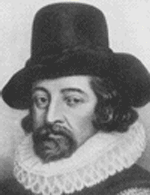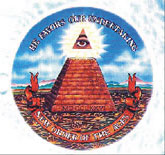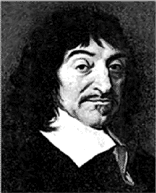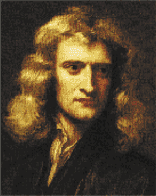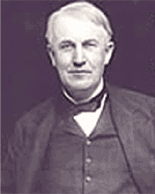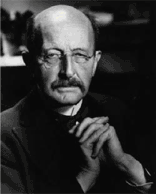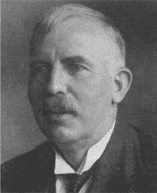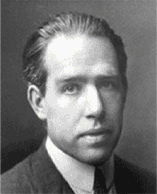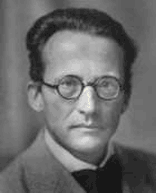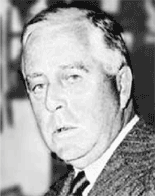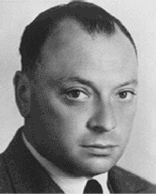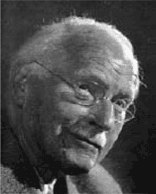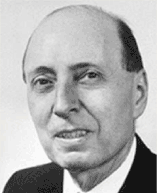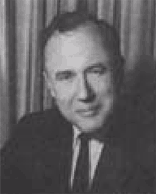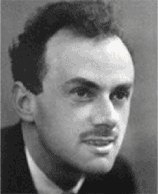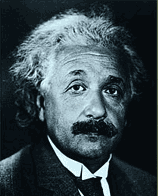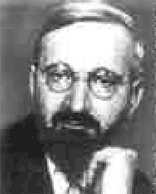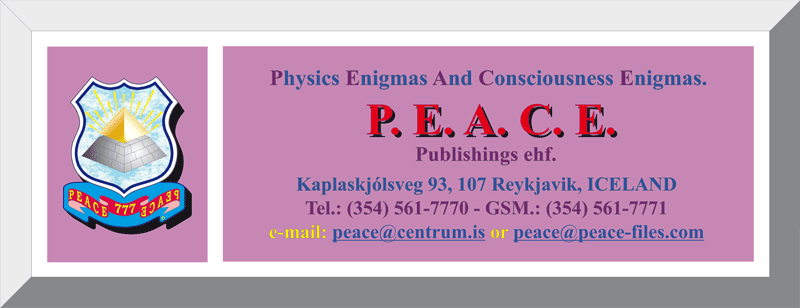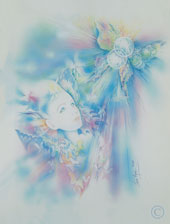 |
The Physics Enigmas And Consciousness Enigmas Files "The PEACE-Files" P. E. A. C. E.
|
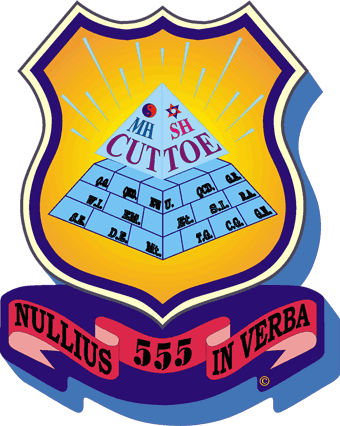
A Recipe
for a Uinverse!
Greatest Search in
Humanity;
Is
it a Search for Something
We
have lost, or perhaps our
Age-old
Search for Ourselves?
The PHYSICS-Files
are:
| 00-Entries | Introductions |
| 01-Part One A | The Progression of Physics 1900-1950 |
| 02-Part One B | The Progression of Physics 1950-2000 |
| 03-Part Two | The Demand for the Anthropic Connection |
| 04-Part Three | The Stalemate in the Progression of Physics |
| 05-Part Four | The Alternate Mathematical Approach |
| 06-Part Five | The Spiritual Connection to Man's Quest |
| 05-Epilogue | The Conclusions and Discussions |
To Home-Index-Front-Page
"According to the
basic laws
of physics, we have to include the
characteristics of the instruments.
Here, the observer,
must be counted amongst
the
instruments."
Quotation from: Professor Brandon Carter.
Part One A:
|
|
|
The great thinker, the British philosopher and nature scientist, Sir Francis Bacon, had begun to see all knowledge of Man as if it was structured like a pyramid with a specific top stone.” The top stone all by it self formed a true pyramid, but the pyramid was not a true pyramid without it, but it represented to Beacon the idea of "The Recipe of the Universe". Many claim this idea to be behind the symbolic pyramid topstone--with the all-seeing-eye of God--that is found in The Great Seal of the United States. The symbol came from the Freemasons that signed the Declaration of Independence and the Constitution of the United States and is very likely to have originated in the idea of Beacon. This very same idea is also taken from Beacon and employed in the pyramid-logos used by the PEACE Publication Ltd.
It may be said that the physical sciences--with theoretical physics at the forefront--have now been evolving in its search for this top stone during the 383 years elapsed since the renowned mystical experience of Descartes. After having had his famous “cogito ergo sum”, spiritual experience on the 10th of November 1619, Rene Descartes became enthusiastic about what he called the admirable scientific method. A sort of collective general method which would unify all of Man's knowledge into one general wisdom, one general unification theory. This took place at the same time as Galileo was in his prime and men had learned to distil alcoholic spirits to make strong burned alcohol drinks--brandies--to energise their brains. This would bring on the "Second Age of Enlightenment" and send the "Dark Ages" in retreat.
At the onset of the dark period in the history of the spirit of Man in the West--the middle ages which began at the burning of Hypothesis's library in Alexandria about 400 years after Christ --Men began telling each other, which stones were permitted to be scrutinised and which not. This control on the search for knowledge had most of its roots in religion. The period lasted for about 1200 years, during which it not only Men were condemned but also much of the scrutiny of Nature, if it did not have to do with the attempts at making gold. In this Galileo and Bruno became the most famous examples.
|
Sir Isaac Newton is for many the prime witness in the search for "The
Recipe of the Universe". Newton may be described as
being
enraptured by the beauty and simplicity of his laws of gravity, and
hoped
that he would stumble on an all encompassing theory, even though he
kept
this secret, and that this would only be known after his death. Through this it may be said that Newton had laid the cornerstone to all the endeavor of modern physics: To show and prove the logical necessity of the Universe. It is thus not the declarations of progress that are the struggle of physics, but this dream of Newton, which was, and which is, the goal of the foremost physicists. According to the physicists, the guidelines to this goal are found in the beauty of the differential equations. Years after Sir Isaac discovered gravity, he was asked about this experience. His reply; "I was just like a little boy walking on the beach where I saw a stone which seemed different from the rest. I picked up the stone and saw why it was so." (A metaphor also credited to Edison but he may have been quoting Newton). |
|
Beauty according to
Shakespeare
is something "In the eye of the observer." Beauty
according
to the physicist is the "The logical invariance in Nature".
The empiricism and positivism
method
has particularly proven itself in the so-called reductionism, which
proposes
to seek the nature of everything by tearing it into ever smaller
fractions
for analyses. However, this motto has on the other hand, brought about
a new type of limitation into the investigation of nature and a
decision
as to what stones may be scrutinised. Now, in the later part of the
twentieth
century, it has come to pass that some of the special disciplines of
the
sciences have begun to approach each other, and even unify. This,
however,
is not coming about through some ideology of the scientists, rather the
nature of the evolution of the investigation. This in turn has brought
about critic and reassessment of the methods of the sciences--amongst
the
scientists them selves--this to the traditional methods of
investigation
and their limitations. The prime targets of this critic have been the
phenomena
that appear in the high energy accelerators of theoretical-experimental
physics, where Man has sought the fundaments for the nature of reality
itself.
|
Years after Thomas Alva Edison discovered the light bulb, he was asked
about this experience. His reply; "I was just like a little boy
walking
on the beach where I saw a stone which seemed different from the rest.
I picked up the stone and saw why it was so." (A metaphor also
credited to Newton, but Edison may have been quoting him). During the former age of information in the history of man--the age of enlightenment in the West--the Greek age of antiquity's period of philosophy, science and art, which lasted for about 800 years, or from about 400 before, until about 400 after Christ, the famous Agora at the root of the Acropolis, became one of the prime arena in Man's discussion on the nature of the World, Man and Reality. |
The
philosophers of the time, which ever they
were, Stoics,
Pythagoreans, Epicureans or Platonists, discussed and scrutinised all
subjects
and left no stones untouched.
| At the onset of the 20th century, on the 14th of De- cember 1900, on the birthday of The New Physics, Max Karl Ernst Ludwig Planck presented the findings of his investi- gation into the ultraviolet radiation and solved the enigma of the so called ultra-violet catastro- phe. At this time it was generally assumed that physics could explain every thing, which lead to the closure of the Kaiserliche Patentoffice in Berlin and the British Royal Academy’s consideration for closing it self down. The reasons; nothing more would be discovered since the causes for everything were known. There was only one thing that seemed to throw a shadow on the deterministic sciences, but this was the fact that ultra- violet radiation violated the known laws of nature--all of which were believed to be known. Planck's findings that |
|
|
With the evolution of The New Physics, Man now acquired two classes of Physical Laws, instead of one. Fortyfive years after this beginning, this lead to the detonation of the Plutonium bomb in Alamogordo in New Mexico and thereby the onset of The Age of the Atom. The story of the evolution of the New Physics, quantum physics, is a story of a discipline which tells us that the material part of the Univer se, even Space itself, are composed of matter/energy units whose smallest division is one quanta. This story is seen by many as the most magnificent part of the evolving history of Man's search for knowledge and under- standing. |
|
It was the Danish physicist, Niels H. D. Bohr, who soon after moving to
England in 1911, had begun working with Rutherford, who made the basic
discover- ies in nuclear physics of the atomic structure and created
the
basic model of the atom we still use today. In 1916 Bohr returned to
his
native Denmark and in 1920 was made the director of the Institute for
Theoret- ical
Physics at the University of Copenhagen that is known today as the
Niels
Bohr Institute. In 1922 Bohr was awarded the Nobel Prize in physics and the insatiate became a Mecca for the leading quantum pioneers who during the twenties and the thirties, met at this institute to present, compare and discuss their theories and research findings. It was |
|
|
Here enters the
seen the most famous of all quantum physics thought
experiments.
This is Erwin Schrö- dinger's riddle of the cat in the box. A
metaphor
whose focal questions are till open for debate in science, but whose
solution is nowhere in sight. The trail of the ghost is found in remarkable remarks of many of the physicists and it can be said that Plank himself initiated this in 1931, when he said "Science can never solve the enigma of Nature, and this is because that in the final analyzes, we our selves are a part of the puzzle, which we are trying to solve." This is still echoing in numerous such remarks, which focus on the finding that at the quantum level, the existence of the Universe depends on an Observer. |
|
However, right at the onset of the evolution of the discoveries of
quantum
mechanics, the British physi- cists Sir James Jeans had made the famous
remark: "The
Universe begins to look more like a great thought than a machine."
In view of the questions regarding the suggested Observer dependence of the Universe and the failure of physics to connect the quantum theory to life and consciousness, Jeans may have been closer to the core of the riddle of the Universe in his remark, than the words indicate and he realised. Later, Adolf Portman commented on this stalemate; "It is now known that the natural sciences have arrived at the borders of the physically knowable. |
|
The
riddle of the Observer
became obvious
right at the onset of the quantum experimentation and the ensuing
efforts
at explanation through theorisations, but the brilliant physicist and
writer,
Professor Fred Alan Wolf makes a clear picture of this in the
Introduction
in his 1981 book TAKING THE QUANTUM LEAP. There he explains to
the
reader how the quantum pioneers were dealing with something which no
one
saw with their eyes, something that was in reality only taking place in
their own minds, or rather that:
|
"...quantum
mechanics indicated that what one observed on an atomic scale 'created'
and determ- ined what onw saw. It was like always seeing light through
a
set of col- oured filters. The colour of
the
light depends on the filter used. yet
there
was no way to get rid of the filters.
Physicists don't know what the filters are." It is precisely the discovery of the explanation for this "filter" and its workings in the human brain, that is at the core of the QF-theory, but at the time of the quant- um pioneers, not enough information about the human brain was available for them to be capable of solving its riddle. |
|
It would be the seeds sowed by the psychology pioneers, Carl Gustaf
Jung
and William James, that would eventually produce the solution to the
riddle
of the physicists "filters".
This solution would be--as pre- dicted--through a unification theory in
physics,
that not only unified the four forces of Nature, the quantum theo- ry
and
general relativity, but also provide the connect- ion between quantum
theory,
life and consciousness. The fundaments for making the connection between the quantum reality description of physics and the psychological reality description of the Observer, would have to be based in a true description of the Observer's psyche. For this end the erroneous descriptions of the |
|
In the creation of the QF-theory connection, extensive help was found in the interpretation of mythology offered by Dr. Jung and that of Professor Joseph Campbell.
|
On of the most remarkable remarks made by any physicist, is the one by the physicist and Nobel laur- eate, Eugene Wigner, who claimed that "Man will never understand physical reality unless he takes into account the self reflecting properties of his consciousness." This is reflected in the famous picture REPRODUCTION PROHIBITED, by the Belgian artist René Magritte (1898-1967), where he portrays a young man standing before the mirror, but not getting a mirror image of himself, but an image as seen by someone viewing him from the behind. Wigner's remark is a nothing short of a demand for the ultimate inclusion of the Observer's in any future Unifi- cation Equations of Physics, claiming the ultimate truth about the Universe and all that is in it. |
| Here we must take care not to forget the grand old man of physics, Professor Emeritus, John Archibald Wheeler, who has emphasised the fact that quantum theory forces us to look inward by the comment "Nothing is more important about quantum physics than this: it has destroyed the concept of the world as 'sitting out there.' The universe will never afterwards be the same." Wheeler has made one of the most remarkable remarks regarding the search for "The Recipe for the Universe!" but this is as follows: "Behind it all is surely an idea so simple, so beautiful, so compelling that when--in a decade, a century or a millennium--we grasp it, we will all say to each other, how could it be oth- erwise? How could we have been so stupid for so long?" |
|
These remarks are not new in
the history
of Man and have been heard at other times, but we are reminded that
2400
years go Protagoras (480?-411? BC) pointed out that "Man
is
the measurer of all things." This is indeed the crux of the
riddles
of physics.
|
Later, when the physicists began to investigate the energy exchanges of
the electron, it was discovered that the mathematics told them that
it
(the electron) was endowed with infinite energy while it was engaged
in the exchange. This was of course an absurdity for the physicists and
to solve this problem a mathematical renormalization process was
created
to whip this out. When Paul Dirac, heard about this, he sternly
pro- tested
claiming that this meant that something was being swept under the rug.
The causes were not investigated and the phenomena not explained. There
are still doubts about this solution. In 1931, the same year as Dirac's discovery of the existance of the antimatter version of matter is proven, |
| Albert Einstein is here an example of a physicist who re- volutionizes physics, only by following his sense of aesthetics. When Einstein began, he found two shining theories: Maxwell's Theory of Electro-magnetism and the Gravitational Theory of Newton. Nothing indicated that these theories might be erroneous--only a small aesthetic discrepancy:--They did not fit together. Maxwell's equations did not permit anything travelling between places faster than the speed of light, on the other hand, the gravitation of Newton distributed itself over cosmic distances with infinite speed. Einstein's cure for this malady was a new theory of gravity, relativity--which is, to this day, no doubt, the most beautiful of all science theories. |
|
Smitten by this beauty, also
Einstein,
like Newton, fell for the desire after the last theory of the complete
unification of the Laws of Nature. He dedicated the rest of his life to
this endeavor; To melt together into one theoretical structure, Gravity
and Electromagnetism, in the form of something which has been called
the Unified
Field Equation.
Einstein eventually made a suggestion
for
this equation and called it the Universal
Constant.
The suggestion turned out to be unfounded and Einstein said to have
regretted
much this attempt. When the efforts of Einstein proved useless, the
hope
for the realization of this dream faded with new discoveries. In stead
of unifying the two known force (Electromagnetism and Gravity), the
progression
of physics forced the physicists into the micro universe of the atom
and
added to it two new forces: The so called Weak-Interactions (Weak
Nuclear
Force) and the Strong Interactions (Strong Nuclear Force). Not only the
forces, but the particles them selves, refused to bow to some simple
rules
and the physicists began to drown in a flood of new basic particles: If
the world of the physicist had began in the twenties with only two
matter
particles, that is the proton and the electron, now Man--in the
fifties--got
lost in an ever more incomprehensible collection of particles. The term
“Particle Zoo” was coned with ower two hundred “fundamental particles”
being discovered by the experimental physicists by their ever-bigger
accelerators.
|
In the later half of the 20th century so-called Super- symmetry Theories were being developed. These are theories, which evolved out of what is known as the Kaluza-Kline discoveries, which first appeared in 1919, and which are very special solutions to the equations of general relativity from 1916. In 1919 the East-Prussian Köeningsberg mathematician, Theodor Kaluza, was experimenting with writing the General Relativity equat- ions in the “5th dimensions”. To his surprise the equations transformed into the equations of Maxwell's electromagnetism, showing for the first time a mathe- matical connection between gravity and electromagne- tism. In combination with mathematical models known as Group Theory, these solutions have now evolved |
But is this search of the New Physics bringing us any closer to the ultimate Recipe for the Universe? On the 13th of June 1988 NEWSWEEK presented an interview with Professor Stephen Hawking on the occasion of the publication of his book A BRIEF HISTORY OF TIME. In this interview he expressed his opinion that it will be possible to explain--in one mathematical equation--all that is observable in creation. That the solution would be in mathematics and that he was convinced that "God spoke that language." One of the prime components of this equation are the unification of general relativity and quantum mechanics, thereby the unification of the classical laws of physics/the mechanical laws, with the statistical/quantum mechanical laws.
"Man will never understand physical reality unless he takes into account the self reflecting properties of his consciousness."
